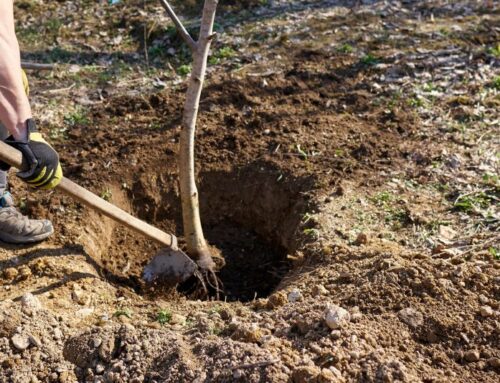
Canopy Loss in Trees, Young Tree Pruning, and Tree Disease…
1. The More I Cut, the Less Often I Have to Prune
Over-pruning can make trees undergo growth spurts because they’re trying to compensate for canopy loss. Canopy loss results in a reduction of photosynthesis that fuels the tree. The rule of thumb is to never prune more than 25% of the living canopy. Prune more than this, and you may find yourself contending with a lot of rapid-growing shoots. The tree is expending energy stored in the trunk and roots to restore its photosynthetic capacity, so you’ll find yourself needing to prune the plethora of new, crowded shoots.
2. A Young Tree Doesn’t Need Pruning Until It’s Older
False. The most critical stage for pruning is when the tree is young. Some people neglect this because the tree looks small and harmless, unlikely to drop branches on their house. But pruning a tree when it’s young sets up good structure and trains it to grow evenly. This reduces the chances of tree failure as it matures. On top of that, it’s easier and cheaper to prune a young tree that a problematic, larger tree. So, start pruning early! Need to know more about Tree Pruning?
3. A Fast Growing Tree is a Healthy Tree
Not necessarily. Consider trees growing in a crowded forest versus an open field. Chances are, trees competing for sunlight in the forest will grow upwards very quickly, taking on a gangly appearance. Trees in an open field will be shorter but much more robust, having more access to sunlight to create stronger wood and more defense compounds.
As discussed in “Myth 1”, over-pruning can also lead to rapid growth. This rapid growth may appear healthy, but it’s actually made up of really weak wood since the tree is rushing to restore food production. This weak wood becomes hazardous as it continues to grow and the added weight increases chances of branch failure.
4. Pest and Disease Have Nothing to do with Soil Quality
Most tree problems appear above ground. But roots and soil are often, well, the “root” of the problem. The amount of nutrients, oxygen, and water in soil greatly affect aboveground tree health. If the aboveground tree health declines, the tree becomes more susceptible to pests and diseases. Furthermore, some diseases hide in the soil and infect the tree from the root up. Learn more about Plant Health Care from A Plus Tree.
 A common myth is that tree roots mimic tree canopies.
A common myth is that tree roots mimic tree canopies.
5. Tree Roots Mirror Tree Canopies
False. It’s a misconception that tree roots spread far and deep, mirroring the size of the canopy above. Tree roots do indeed spread far in search of resources, often to a width 2-4 times that of the canopy. However, most roots don’t grow below 12″ of the soil surface, other than a few anchoring roots. After all, roots need oxygen to survive, and there’s not much of it deep beneath the ground surface. Plus, the nutrients that roots search for are most available in the upper 12″ or so, where microorganism activity is the greatest and most organic matter is found.





